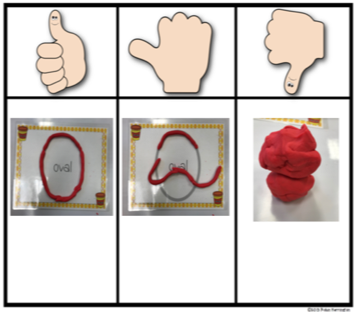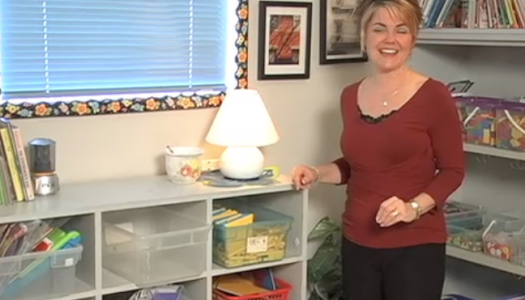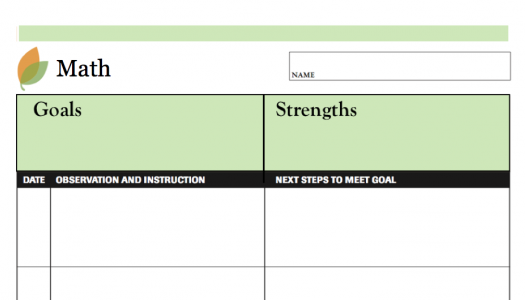Math Drawers and Student-Made Rubrics
Join Our Community
Access this resource now. Get up to three resources every month for free.
Choose from thousands of articles, lessons, guides, videos, and printables.
I began Math Daily 3 this year. Watching kindergartners develop independence and a true love for math has generated many positives. However, I felt guilty about the closet full of purchased math games from previous years that weren’t being used. I knew many of those games would increase engagement and allow students to dive deeper into the topics they were learning about.
 So, I created math game drawers similar to my Daily 5 Word Work drawers. The games are based on the topics covered in the kindergarten curriculum. Each drawer is labeled with a Velcro label so it can be easily changed. Games were introduced using the gradual release of responsibility model. “A more complete implementation model for the gradual release of responsibility recognizes the recursive nature of learning and has teachers cycle purposefully through purpose setting and guided instruction, collaborative learning, and independent experiences” (Fisher & Frey, 2013). By using the gradual release of responsibility, students are able to work independently on each math game.
So, I created math game drawers similar to my Daily 5 Word Work drawers. The games are based on the topics covered in the kindergarten curriculum. Each drawer is labeled with a Velcro label so it can be easily changed. Games were introduced using the gradual release of responsibility model. “A more complete implementation model for the gradual release of responsibility recognizes the recursive nature of learning and has teachers cycle purposefully through purpose setting and guided instruction, collaborative learning, and independent experiences” (Fisher & Frey, 2013). By using the gradual release of responsibility, students are able to work independently on each math game.
 Students helped create rubrics for each drawer. “Offering experiences where children review their work allows them to build self-evaluation skills needed to consider progress within the task; subsequently serving to motivate them to put more effort into their work and ultimately assists them in becoming involved in their learning” (Warash & Workman, 2016). The rubric serves as a visual to help keep students focused. It also motivates students to put in more effort to earn their thumbs-up.
Students helped create rubrics for each drawer. “Offering experiences where children review their work allows them to build self-evaluation skills needed to consider progress within the task; subsequently serving to motivate them to put more effort into their work and ultimately assists them in becoming involved in their learning” (Warash & Workman, 2016). The rubric serves as a visual to help keep students focused. It also motivates students to put in more effort to earn their thumbs-up.
Students are able to choose a drawer based on their interest. Research shows that students’ motivation increases when they’re given opportunities to choose. “The choice is one of the most important ideas in play because students choose what they are curious about and create play based on what they want to know” (Long, 2018). Students are eager to come back from lunch and get started with Math Daily 3. They will even choose a math game drawer during indoor recess or choice time.
Using math game drawers with student-made rubrics has aided in organization, student engagement, independence, and motivation. Math game drawers have been a huge success for these kindergarten mathematicians.

References
Fisher, D., & Frey, N. (2013). Learning, or not learning, in school. Retrieved from http://www.ascd.org/publications/books/113006/chapters/Learning,-or-Not-...
Long, C. (2018, June 7). The power of play in kindergarten. Retrieved December 8, 2018, from http://neatoday.org/2018/06/07/play-in-kindergarten/
Workman, M. (2016). Teaching preschoolers to self-assess their choices in pre-K. Journal of Educational Research and Practice, 6(1), 97–104.
Additional Sources
Rubric Frame: Coloring Rubric for the Primary Classroom {How Does My Work Look?}, by Class of Kinders.
Games: Lakeshore, Learning Resources, Magna-Tiles, by Valtech.
Drawers: https://www.michaels.com/recollections-10-drawer-rolling-organizer/10197...






